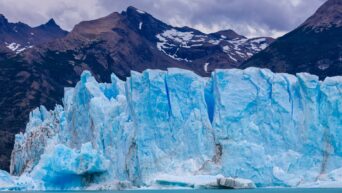
Credit: Unsplash
The little rover sent a vacation photo from its latest dig site.
NASA’s next Mars rover, Perseverance, is still hurtling through the deep dark toward its red goal. By current estimations, it should touch down on the surface of Mars some time this February, but until it begins its mission, the current rover, Curiosity, has no shortage of work to do.
During its latest dig, Curiosity took a selfie of itself, showcasing the vast, dusty Martian landscape. As opposed to how we humans take selfies, either by extending our arms or with a selfie stick, Curiosity’s selfies are actually composite pictures stitched together by NASA control from 59 panoramic photos. This particular selfie shows Curiosity in the middle of an archeological dig at a new Martian landmark nicknamed “Mary Anning.” Mary Anning was a paleontologist in the 19th century whose incredible discoveries of marine and reptile fossils went unacknowledged for many years because of gender discrimination. Curiosity’s science team named the dig site after her because, if it were to uncover something, it would change our fundamental understanding of Mars forever.
Look cute – and I won’t delete later.
Greetings from the Red Planet! I took another selfie as I explored a new spot dubbed “Mary Anning,” where I'm analyzing drill samples. I conducted experiments on them in my continued search for organic molecules. https://t.co/NKTjxVNjX7 pic.twitter.com/GynSQifLQC
— Curiosity Rover (@MarsCuriosity) November 12, 2020
So what’s Curiosity digging for? Organic molecules. The rover made three holes in the ground, named “Mary Anning,” “Mary Anning 3,” and “Groken,” all in search of carbon-based molecules. Theoretically, a carbon-based environment would imply that the surface of Mars, or at least the sub-surface, would be capable of sustaining life, and either currently is or was a long time ago.
The Mary Anning site is the latest dig in Curiosity’s ongoing climb of the Martian peak of Mount Sharp. So far, the rover has searched a large area that may have once housed lakes and streams, judging from the makeup of clay in the ground. The next stop will be a large layer of rock high upon the mountain that is believed to be covered with sulfates. Hopefully, Curiosity can roll its way up there early next year.
































